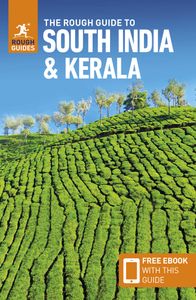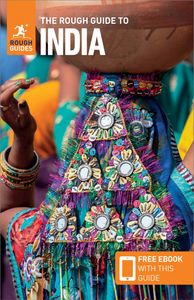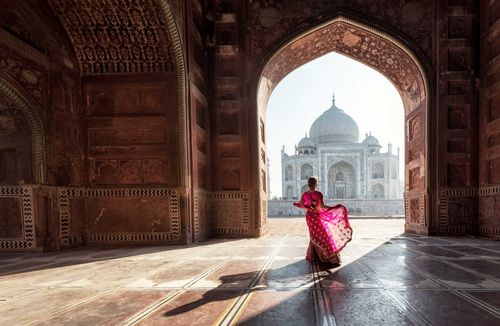When is the best time to visit Delhi?
Delhi is hugely overpopulated and suffers from terrible air pollution. The city experiences both weather extremes, from icy winds to sweltering heat waves. With that in mind, the best time to visit Delhi is some time between November to March.
What is the best time of year to visit the Taj Mahal?
Like with Delhi, the best time of the year to visit Taj Mahal would be between November to March.
Festivals and Holidays in India
Virtually every temple in every town or village across the country has its own festival. The biggest and most spectacular include Puri’s Rath Yatra festival in June or July, the Hemis festival in Ladakh, also held in June or July, Pushkar’s camel fair in November, Kullu’s Dussehra, Madurai’s three annual festivals and, of course, the Kumbh Mela, held in turn at Allahabad, Haridwar, Nasik and Ujjain. While mostly religious in nature, merrymaking rather than solemnity are generally the order of the day, and onlookers are invariably welcome. Indeed, if you’re lucky enough to coincide with a local festival, it may well prove to be the highlight of your trip.
The calendar below includes details of the main national and regional celebrations. Hindu, Sikh, Buddhist and Jain festivals follow the Indian lunar calendar and their dates therefore vary from year to year – we’ve given the lunar month (Magha, Phalguna, Chaitra, and so on), where relevant. The lunar calendar adds a leap month every two or three years to keep it in line with the seasons. Muslim festivals follow the Islamic calendar, whose year is shorter and which thus loses about eleven days per annum against the Gregorian.
In recent years, there has been an explosion in the number of contemporary, pop and fusion music festivals, as India develops a circuit something like the UK and other parts of Europe. Examples include Festa de Diu, Ragasthan, Jodhpur RIFF and Magnetic Fields.
You may, while in India, be lucky enough to be invited to a wedding. These are jubilant affairs, always scheduled on auspicious days. A Hindu bride dresses in red for the ceremony, and marks the parting of her hair with red sindur and her forehead with a bindi. She wears gold or bone bangles, which she keeps on for the rest of her married life. Although the practice is officially illegal, large dowries often change hands. These are usually paid by the bride’s family to the groom, and can be contentious; poor families feel obliged to save for years to get their daughters married.
Principal Indian holidays
India has only four national public holidays as such: Jan 26 (Republic Day); Aug 15 (Independence Day); Oct 2 (Gandhi’s birthday); and Dec 25 (Christmas Day). Each state, however, has its own calendar of public holidays; you can expect most businesses to close on the major holidays of their own religion. The Hindu lunar calendar months are given in brackets here.
Key: B=Buddhist; C=Christian; H=Hindu; J=Jain; M=Muslim; N=non-religious; P=Parsi; S=Sikh.
Jan–Feb (Magha–Phalguna)
NHampi Utsav: Government-sponsored music and dance festival.
H Pongal (1 Magha): Tamil harvest festival celebrated with decorated cows, processions and rangolis (chalk designs on the doorsteps of houses). Pongal is a sweet porridge made from newly harvested rice and eaten by all, including the cows. The festival is also known as Makar Sankranti, and celebrated in Karnataka, Andhra Pradesh and the east of India.
H Sagar Mela: Pilgrims come from all over the country to Sagardwip, on the mouth of the Hooghly 150km south of Kolkata, to bathe during Makar Sankranti.
N International Kite Festival/Uttarayan (Jan 14). Coinciding with Makar Sankranti, Ahmedabad (Gujarat) hosts the most spectacular of all of India’s kite festivals.
H Vasant Panchami (5 Magha): One-day spring festival in honour of Saraswati, the goddess of learning, celebrated with kite-flying, the wearing of yellow saris and the blessing of schoolchildren’s books and pens by the goddess.
N Republic Day (Jan 26): A military parade in Delhi typifies this state celebration of India’s republic-hood, followed on Jan 29 by the “Beating the Retreat” ceremony outside the presidential palace in Delhi.
H Teppa Floating Festival (16 Magha). Meenakshi and Shiva are towed around the Vandiyur Mariamman Teppakulam tank in boats lit with fairy lights – a prelude to the Tamil marriage season in Madurai, Tamil Nadu.
N Elephanta Music and Dance Festival. Classical Indian dance performed with the famous rock-cut caves in Mumbai harbour as a backdrop.
Feb–March (Phalguna)
B Losar (1 Phalguna): Tibetan New Year celebrations among Tibetan and Himalayan Buddhist communities, especially at Dharamsala (HP).
H Shivratri (10 Phalguna): Anniversary of Shiva’s tandav (creation) dance, and his wedding anniversary. Popular family festival but also a sadhu festival of pilgrimage and fasting, especially at important Shiva temples.
H Holi (15 Phalguna): Water festival held during Dol Purnima (full moon) to celebrate the beginning of spring, most popular in the north. Expect to be bombarded with water, paint, coloured powder and other mixtures; they can permanently stain clothing, so don’t go out in your Sunday best.
N Khajuraho Festival of Dance: The country’s finest dancers perform in front of Madhya Pradesh’s famous erotic sculpture-carved shrines.
N Goa Carnival: Goa’s own Mardi Gras features float processions and feni-induced mayhem in the state capital, Panjim.
March–April (Chaitra)
H Gangaur (3 Chaitra): Rajasthani festival (also celebrated in Bengal and Odisha) in honour of Gauri (Parvati), marked with singing and dancing.
H Ramanavami (9 Chaitra): Birthday of Rama, the hero of the Ramayana, celebrated with readings of the epic and discourses on Rama’s life and teachings.
C Easter (moveable feast): Celebration of the resurrection of Christ. Good Friday in particular is a day of festivity.
P Pateti:Parsi new year, also known as Nav Roz, celebrating the creation of fire. Feasting, services and present-giving.
P Khorvad Sal (a week after Pateti): Birthday of Zarathustra (aka Zoroaster). Celebrated in the Parsis’ fire temples, and with feasting at home.
April–May (Vaisakha)
HS Baisakhi (1 Vaisakha): To the Hindus, it’s the solar new year, celebrated with music and dancing; to the Sikhs, it’s the anniversary of the foundation of the Khalsa (Sikh brotherhood) by Guru Gobind Singh. Processions and feasting follow readings of the Granth Sahib scriptures.
H Chithirai: Lively procession at Madurai in Tamil Nadu. See p.1016.
J Mahavir Jayanti (13 Vaisakha):Birthday of Mahavira, the founder of Jainism. The main Jain festival of the year, observed by visits to sacred Jain sites, especially in Rajasthan and Gujarat, and with present-giving.
H Puram: Frenzied drumming and elephant parades in Thrissur, Kerala.
B Buddha Jayanti (16 Vaisakha): Buddha’s birthday. He achieved enlightenment and nirvana on the same date. Sarnath (UP) and Bodh Gaya (Bihar) are the main centres of celebration.
May–June (Jyaishtha)
H Ganga Dussehra (10 Jyaishtha): Bathing festival to celebrate the descent to earth of the goddess of the Ganges.
June–July (Ashadha)
H Rath Yatra (2 Ashadha): Festival held in Puri (and other places, especially in the south) to commemorate Krishna’s (Lord Jagannath’s) journey to Mathura.
H Teej (3 Ashadha): Festival in honour of Parvati to welcome the monsoon. Particularly celebrated in Rajasthan.
B Hemis Tsechu Held sometime between late June and mid-July, this spectacular Ladakh festival features chaam (lama dances) to signify the victory of Buddhism over evil.
July–Aug (Shravana)
H Naag Panchami (3 Shravana): Snake festival in honour of the naga snake deities. Mainly celebrated in Rajasthan and Maharashtra.
H Raksha Bandhan/Narial Purnima (16 Shravana): Festival to honour the sea god Varuna. Brothers and sisters exchange gifts, the sister tying a thread known as a rakhi to her brother’s wrist. Brahmins, after a day’s fasting, change the sacred thread they wear.
N Independence Day (Aug 15): India’s biggest secular celebration, on the anniversary of Independence from the UK.
Aug–Sept (Bhadraparda)
H Ganesh Chaturthi (4 Bhadraparda): Festival dedicated to Ganesh, especially celebrated in Maharashtra. In Mumbai, huge processions carry images of the god to immerse in the sea.
H Onam: Keralan harvest festival, celebrated with snake-boat races. The Nehru Trophy Snake Boat Race at Alappuzha (held on the 2nd Sat of Aug) is the most spectacular, with long boats crewed by 150 rowers.
H Janmashtami (23 Bhadraparda): Krishna’s birthday, an occasion for fasting and celebration, especially in Agra, Mathura and Vrindavan (UP).
Sept–Oct (Ashvina)
H Dussehra/Dasara (1–10 Ashvina): Ten-day festival (usually two days’ public holiday) associated with vanquishing demons, in particular Rama’s victory over Ravana in the Ramayana, and Durga’s over the buffalo-headed Mahishasura (particularly in West Bengal, where it is called Durga Puja). Dussehra (known as Dasara in south India) celebrations include performances of the Ram Lila (life of Rama). Best in Mysuru (Karnataka), Ahmedabad (Gujarat) and Kullu (Himachal Pradesh). Durga Puja is best seen in Kolkata where it is an occasion for exchanging gifts, and every locality has its own competing street-side image.
N Mahatma Gandhi’s Birthday (Oct 2): Solemn commemoration of independent India’s founding father.
Oct–Nov (Kartika)
H Diwali (Deepavali) (15 Kartika): Festival of lights, and India’s biggest, to celebrate Rama’s and Sita’s homecoming in the Ramayana. Festivities include the lighting of oil lamps and firecrackers, and the giving and receiving of sweets and gifts. Diwali coincides with Kali Puja, celebrated in temples dedicated to the wrathful goddess, especially in Bengal, and often accompanied by the ritual sacrifice of goats.
J Jain New Year (15 Kartika): Coincides with Diwali, so Jains celebrate alongside Hindus.
S Nanak Jayanti (16 Kartika): Guru Nanak’s birthday marked by prayer readings and processions, especially in Amritsar and in the rest of the Punjab, and at Patna (Bihar).
Nov–Dec (Margashirsha or Agrahayana)
H Sonepur Mela: World’s largest cattle fair at Sonepur (Bihar).
N Pushkar Camel Fair: Camel herders don their finest attire for this massive livestock market on the fringes of the Thar Desert in Rajasthan.
Dec–Jan (Pausa)
N Poush Mela (Dec 22–25): Held in Shantiniketan near Kolkata, this festival is renowned for its musical performances by Bauls (mystic minstrels).
C Christmas (Dec 25): Popular in Christian areas of Goa and Kerala, and in big cities.
Moveable
H Kumbh Mela: Major festival held at four holy cities in rotation, with each location hosting once every twelve years: Allahabad (UP), Nasik (Maharashtra), Ujjain (MP) or Haridwar (Uttarakhand). The Allahabad event is the most important and drew 120 million people in 2013; there are also Ardh (half) Kumbh Melas in between, the next at Allahabad in 2019.
M Ramadan: The month during which Muslims may not eat, drink or smoke from sunrise to sunset, and should abstain from sex. Muslim areas tend to come alive in the evenings as locals break their fast after prayers (iftar) and shop for Id. Estimated future dates are: May 27 to June 25, 2017, May 16 to June 14, 2018, and May 6 to June 4, 2019.
M Id ul-Fitr: Feast to celebrate the end of Ramadan. The precise date of the festival depends on exactly when the new moon is sighted, and so cannot be predicted with complete accuracy. Estimated dates (though these may vary by a day or two) are: June 26, 2017, June 15, 2018, and June 5, 2019.



_listing_1448379939234.jpeg)
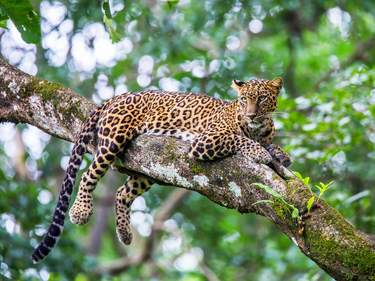
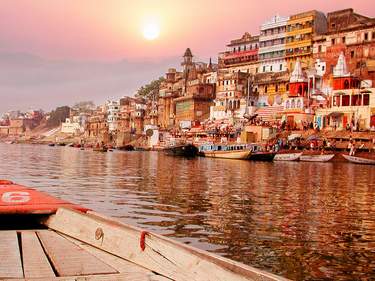

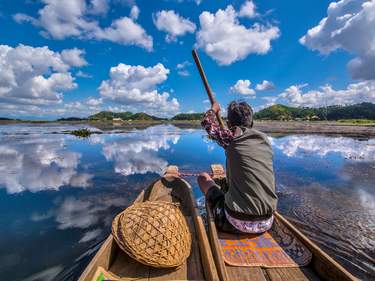


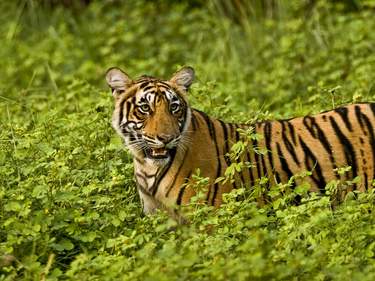
_listing_1507107120458.jpeg)

